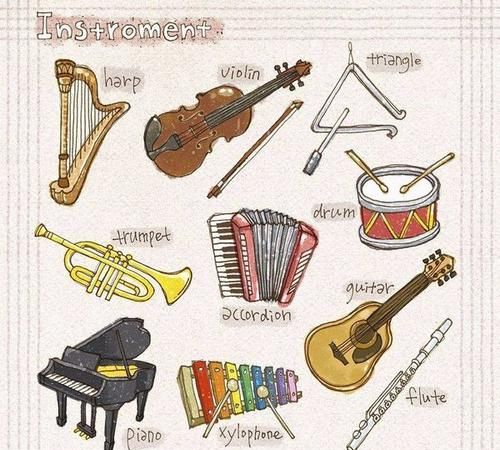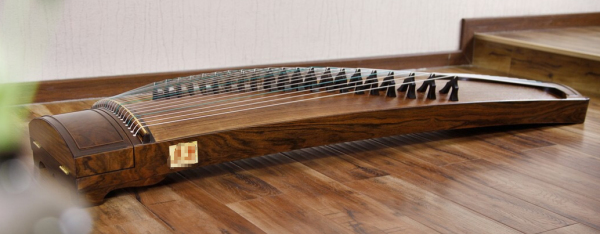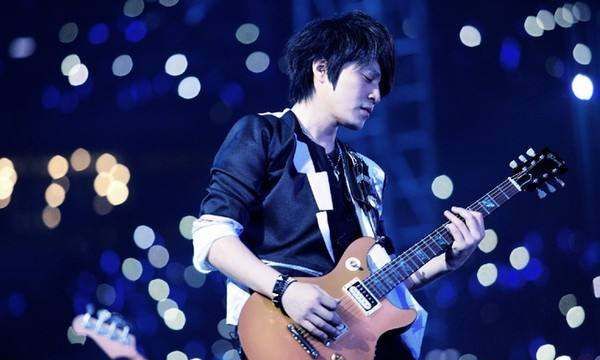本文目录
中国传统乐器有哪些用英语翻译
CHINESE MUSICAL INSTRUMENTS
There are many deep traditions of the bowed, plucked, wind, and percussion instrument families, and many in these families of instruments are listed here below. These instruments are used for traditional music, classical music, folk music, and modern music and compositions (there are also many other older instruments used by the many Minority groups in China). (NOTE - all of the tunings listed in the bowed and plucked instruments are from the lowest pitched strings to the highest - and the word "qin" 琴 means "instrument"):
Bowed Instruments:
1.Erhu 二胡 - the Chinese two string violin with metal strings, tuned a fifth interval apart, to D and A, or sometimes to C and G. "Huqin" is the name for this family of Chinese bowed instruments; and "qin" is the general name for an instrument. It is called nanju (or the nanhu 南胡 ) by Cantonese and Taiwan people..
2.Jinghu 京胡 - the Beijing Opera two string violin pitched one octave above the erhu. The soundbox is made of bamboo and the strings are usually metal; traditionally the strings were silk, and silk strings are occasionally still used. The strings are tuned a fifth interval apart.
3.Gaohu 高胡 - the soprano version of the two string erhu, tuned a fourth interval higher than the erhu, with metal strings tuned a fifth interval apart.
4.Zhonghu 中胡 - the deeper "viola" version of the two string erhu, with metal strings tuned in fifth intervals; and tuned a fourth or a fifth lower than the erhu.
5.Gehu 革胡 - the deeper "cello" version of the two string erhu, with metal strings tuned a fifth interval apart. Bei gehu 倍革胡 is the big deeper "bass" with four metal strings tuned in fifth intervals.
6.Sihu 四胡 - an erhu type instrument with four silk strings tuned in fifth and fourth intervals, to C-G-C-G, or D-A-D-A. It sounds much like the human voice, and it has a bow which has two simultaneous bowing parts.
7.Dalei 大擂 - an erhu type instrument with the soundbox made of copper, tuned lower than the erhu, also sounding much like the human voice, with two metal strings tuned a fifth interval apart; traditionally they were tuned a fourth interval apart.
8.Banhu 板胡 - a loud erhu type instrument made of coconut, with two metal strings tuned in fifth intervals.
9.Nanju (or the Nanhu 南胡 ) - the Cantonese opera erhu, with two metal strings tuned a fifth interval apart.
10.Matouqin 马头琴 (or in Mongolian, the Morin Huur, the Morin Khuur, the Morin Xuur, the Morin Khor, or the Marinhur, or the Chaoer in eastern Mongolia), the Mongolian deep sounding two string bowed instrument that got its name from the carved horse head by the tuning pegs, with nylon or metal strings, and traditionally with horsehair strings, and they are tuned a fifth interval apart. There are three different sizes, like the Western violin, viola, and cello. Traditionally in eastern Mongolia the fingerboard is played normally like a violin, and the instrument is also called the Chaoer, but in western Mongolia, traditionally the string is played where the bottom of the nail meets the skin of the finger, so that the sound is produced with both the nail and the finger. Di Matouqin 低马头琴 - the bigger and lower pitched Matouqin, also tuned in fifth intervals.
Plucked Instruments:
1.Pipa 琵琶 - the four string Chinese fretted lute, with metal strings, and occasionally with silk strings. It is tuned G-C-D-G, or A-D-E-A.
2.Liuqin 柳琴 - the small pipa, the Chinese fretted lute, with three or four metal strings. It has either three strings tuned G-D-G, or four strings tuned G-D-G-D; and the four strings can also be tuned in fifths like a Western violin, to G-D-A-E.
3.Yueqin 月琴 - also called the "moon guitar", played with the Beijing Opera, a banjo-like fretted instrument with three or four metal strings. It is tuned A-D-A, or G-C-G, or D-A-D, or C-G-C; or with four strings, it is tuned D-A-D-A, or C-G-C-G.
4.Ruan 阮 - similar to the yueqin, but it has a hollow soundbox and a longer neck. It has three or four metal strings and is fretted. Xiaoruan 小阮 has three strings tuned D-A-D, or four strings tuned D-A-D-A. Zhongruan 中阮 , the medium lower ruan, has four metal strings tuned D-A-D-A, or to G-D-G-D; or tuned in fifth intervals like the Western cello to C-G-D-A, and it is fretted. Daruan 大阮, the big bass ruan, is traditionally tuned D-A-D-A, and in modern times it is also tuned in fifth intervals like the Western cello C-G-D-A, and it is usually bowed.
5.Sanxian 三弦 - the three string unfretted lute with metal, or gut, or nylon strings, with a long neck and made of snake skin. This instrument is also played in Japan, and it is also the main instrument for traditional music in Okinawa. It is tuned C-G-C.
6.Yangqin 扬琴 - the hammered dulcimer, called the "Butterfly Harp."
7.Guqin 古琴 - (or the qin), the ancient seven string Chinese zither with metal strings wrapped with nylon, played by sliding the fingernail up the strings. It originally had five strings, and was called the qin, meaning "instrument," or "stringed instrument"; and the term "gu" means ancient. The standard tuning (listed in the key of C) is G-A-C-D-E-G-A. Another very common tuning (for the key of F) is C-D-F-G-A-C-D, and there are many others.
8.Guzheng 古筝 (or the Gu-Zheng, or the Zheng, or the Cheng), the Chinese zither/ harp with 16 to 25 strings and a moveable bridge. The 18 string and the older 16 string ones have metal strings and the 21 to 25 string ones have wire strings wrapped with nylon. Traditionally the older instrument had 13 strings made of silk, and that one was the ancestor of the Japanese Koto. The two most common tunings are the C pentatonic scale (C-D-E-G-A), and the G pentatonic scale (G-A-B-D-E); the pentatonic scale has the first, second, third, fifth, and sixth degrees of the scale.
9.Konghou 箜篌 - the vertical guzheng, the Chinese zither/harp, somewhat like a Western harp, with four pedals, and it usually has five or six octaves. It has metal strings wrapped with nylon in the lower section, and the higher strings are sometimes metal.
10.Se 瑟 - the ancient 50 string zither with a moveable bridge, which is no longer played. It may have been the forerunner of the guzheng, the Chinese zither/ harp (see related article). It had silk strings.
11.Hudie Zheng 蝴蝶筝 - somewhat like two guzhengs combined, sometimes called the "butterfly guzheng", which is a recent invention, but rarely played. It has metal strings wrapped with nylon, and some of the high strings can be metal. It has a set of 25 strings tuned normally to a pentatonic scale on the right side (with the first, second, third, fifth, and sixth degrees of the scale - in the key of C those notes are C, D, E, G, and A), where the bridge is moveable; and on the left side of the bridge, with notes that cannot be bent (and without a moveable bridge), a set of strings is tuned in half steps to all twelve chromatic Western pitches within the octave; also the left side has some pairs of strings that are tuned to the same notes that correspond to the notes of the strings on the right side of the bridge that are in the pentatonic tuning.
12.Khomuz (or the Koxianqin 口弦琴) - the Mongolian jaw harp with one or two metal reeds, played by holding it in the mouth and changing the tones with the mouth cavity.
13.Duxianqin 独弦琴 - an old one string instrument with a metal string supported by a wood bow, played by plucking the string and bending the wood bow.
Wind Instruments:
1.Xun 埙(or the Huin, or the Hsuin, or the Hsun) - a clay wind instrument with eleven holes. It was revived by the Guzheng master Cao Zheng in the early 1970s, and it became very popular again in 1998.
2.Dizi 笛子 - the horizonal side-blown bamboo flute.
3.Xiao 箫 (or the Hsiao) - the vertical bamboo flute.
4.Paixiao 排箫 - Chinese pan-pipes.
5.Sheng 笙 - the bamboo mouth organ, blown both in and out. It was the ancient ancestor of the Western harmonica. Diyinsheng is the big mouth organ with 48 pipes.
6.Hulusi 葫芦丝 - made of bamboo or another plant such as straw grass, and played like a mouth organ, blown both in and out. Shuangguan Hulusi is the double-reed hulusi.
7.Bawu 巴乌 - the small and deeper sounding bamboo flute.
8.Guanzi 管子 - the short cylindrical-bore oboe type older flute, made of wood. Shuangguan 双管 is a double-pipe flute made of wood.
9.Suona 唢呐 - Chinese trumpet, further specialized into gaoyinsuona, the soprano trumpet; zhongyinsuona, the lower trumpet; and diyinsuona, the bass trumpet.
这样应该挺详细的吧,嘿嘿·

古筝用英文怎么说怎么写
“古筝”的英文为:Chinese Zither
读音:英[ˌtʃaɪˈniːz ˈzɪðə(r)]、美[ˌtʃaɪˈniːz ˈzɪðər]
固定搭配:Chinese ancient zither 古筝、Chinese Zither Music 古筝曲
例句:Chinese Zither is a string musical instrument with over 2500 years of history.
中国古筝是一个有著2500年悠久历史的古典弦乐器。

扩展资料:
Chinese Zither的发展情况介绍:
Chinese Zither的音色优美,音域宽广、演奏技巧丰富,具有相当强的表现力,因此它深受广大人民的喜爱。古筝是一件伴随中国悠久文化,在这肥沃的黄土地上土生土长的古老民族乐器。结构由面板、琴弦、前岳山、弦钉、调音盒、琴足、后岳山、侧板、出音口、底板、穿弦孔组成。
通常Chinese Zither的型号前用S21,S代表S形岳山,是王巽之与缪金林共同发明,163代表古筝长度是163厘米左右,21代表古筝弦数21根。
中国的民族乐器英语单词怎么写
Woodwinds: 木狗的一种 19.Piccolo Clarinet 高音单簧管* 20.Alto Clarinet 中音单簧管(Eb调的,属于低音单簧管) 21.Contrabass Clarinet 倍低音单簧管 22.Descant Recorder 高音竖笛 23.Alto Recorder 中音竖笛 24.Tenor Recorder 次中音竖笛 25.Bass Recorder 低音竖笛 26.Bagpipes 风笛 27.Basset Horn 巴赛管(单簧管) 28.Panpipes 排萧 二、Brass: 铜管乐器 1.Cornet 短号 2.Trumpet in Bb 降B调小号 3.Trumpet in C C调小号 4.Flugelhorn 夫吕号(行进乐队常用) 5.Horn in F F调圆号 6.Trombone 长号 7.Tenor Trombone 次中音长号 8.Bass Tromone 低音长号 9.Baritone(T.C.) 次中音号 10.Baritone 次中音 11.Euphonium 小低音号 12.Tuba 大号 13.Bass Tuba 低音大号 14.Piccolo Cornet 高音短号 15.Piccolo Trumpet in A A调高音小号 16.Bass Trumpet in C C调低音小号 17.Alto Trombone 中音长号 18.Contrabass Trombone 倍低音长号 三、Pitched Percussion: 有音高打击乐器 1.Timpani 定音鼓 2.Bells 排钟 3.Glockenspiel 钢片琴 4.Crystal Glasses 5.Xylophone 木琴 6.Vibraphone 颤音琴 7.Marimba 马林巴琴 8.Bass Marimba 低音马林巴琴 9.Tubular Bells 管钟 10.Chimes 钟琴 11.Steel Drums 钢鼓 12.Mallets 三角木琴 四、Percussion: 小打击乐器 1.Percussion 小狗叫的拉丁乐器) 23.Maracas 沙槌 24.Castanets 响板 25.Wood Blocks 盒棒 26.Temple Blocks 木鱼 27.Log Drum 木鼓 28.Tambourine 铃鼓 29.Whistle 哨 30.Siren 汽笛 31.Jawbone 32.Anvil 乐钻 五、Drums: 鼓 1.Drum Set 架子鼓 2.Bongo Drums 邦加鼓(用手指敲的小鼓,夹在两腿间) 3.Timbales 蒂姆巴尔鼓 4.Conga Drums 康加鼓(橄榄型) 5.Snare Drum 小军鼓 6.Quad Toms 4组鼓筒鼓 7.Quint Toms 五组筒鼓 8.Tenor Drum 次高音鼓 9.Tom Toms 筒鼓 10.Roto Toms 轮鼓 11.Bass Drum 低音鼓 六、Plucked Strings: 弹拨乐 1.Harp 竖琴 2.Guitar 吉他 3.Scoustic Guitar 4.electric Guitar 电吉他 5.Banjo 班卓 6.Bass 贝司 7.Acoustic Bass 非电贝斯 8.Electric Bass 电贝司 9.String Bass 弦贝司 10.Mandolin 曼陀林 11.Lute 琉特琴 12.Ukulele 夏威夷四弦琴 13.Zither 齐特尔琴 14.Sitar 锡塔尔琴 七、Keybords: 键盘 1.Piano 钢琴 2.Organ 管风琴 3.Harpsichord 大键琴 4.Celesta 钢片琴 5.Accordion 手风琴 6.Clavichord 古钢琴 7.Harmonium 脚踏式风琴 8.Synthesizer 电子合成器 八、Strings: 弦乐 1.Violin 小提琴 2.Violin Ⅰ 小提琴1 3.Violin Ⅱ 小提琴2 4.Viola 中提琴 5.Cello 大提琴 6.Violoncello 低音提琴 7.Contrabass 低音提琴 8.Double Bass 倍低音提琴 9.Solo Violin 独奏小提琴 10.Solo VIola 独奏中提琴 11.Solo Cello 独奏大提琴 12.Solo Bass 独奏低音提琴 13.Viola d' Amore 九、Handbells: 手铃 1.Handbells 手铃 2.Handbells(T.C) 手铃(中音) grand piano 三

关于乐器的英语单词
关于乐器的英语单词有:
1、Guitar:吉他。英 [gɪˈtɑ:(r)],美 [ɡɪˈtɑr]。作名词的时候翻译为吉他、六弦琴。
如下图:The guitarist is playing the guitar. 这个吉他手在弹吉他。

2、Drum:鼓。英 [drʌm],美 [drʌm]。作名词的时候翻译为鼓、鼓声、鼓状物、石首鱼。
3、Piano:钢琴。英 [piˈænəʊ],美 [piˈænoʊ]。作名词的时候翻译为钢琴、轻奏乐段。
4、Violin:小提琴。英 [ˌvaɪəˈlɪn],美 [ˌvaɪəˈlɪn]。作名词的时候翻译为小提琴、小提琴手。
5、Accordion:手风琴。英 [əˈkɔ:diən],美 [əˈkɔ:rdiən]。作名词的时候翻译为手风琴。
参考资料:accordion-百度翻译
以上就是关于中国传统乐器英语,中国传统乐器有哪些用英语翻译的全部内容,以及乐器歌英语 的相关内容,希望能够帮到您。
